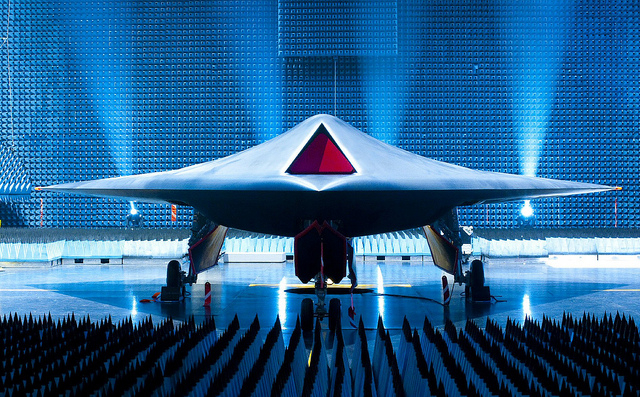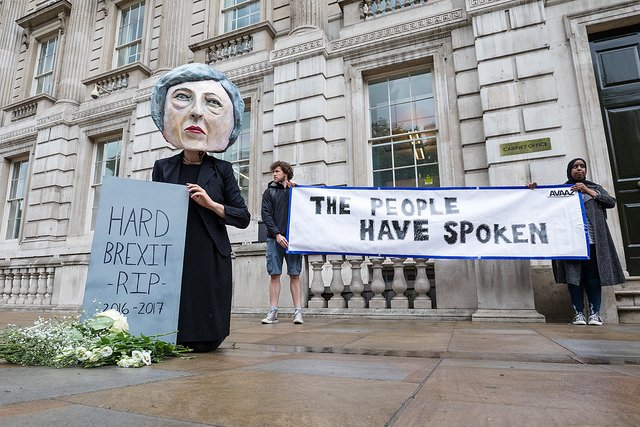Conquest isn’t what it used to be. Large scale invasions and occupations are out of the question. The West is still militarily preeminent on paper, yet in practice its coalitions have floundered in Iraq and Afghanistan. This situation has forced a shift away from conventional military force towards a more politically palatable method of warfare centering on the use of special forces, mercenaries and drones.
Taking its cues, as ever, from the USA, the UK’s Ministry of Defence has commissioned papers to explore these new strategic options. Though the War on Terror has seen their oversight and accountability trimmed back, the use of elite or irregular forces and mercenaries is not novel. Robot warfare, on the other hand, is a radical departure, and has aroused increasing alarm throughout the world.
As though on cue, American activist groups such as San Francisco’s Code Pink have led high profile campaigns against the use of UAVs. British retailer Lush has even launched an anti-killer robots initiative, bringing the drone debate directly onto the British high street and not without justification
Drone missile strikes create substantial grievances among the local civilian populations in places like Afghanistan. But Apache attack helicopters fire the same Hellfire air-to-ground missiles, and there is no significant anti-Apache or even anti-Hellfire campaign.
Similarly, NATO soldiers having been blowing holes in the walls and kicking in the front doors of Iraqi and Afghan houses, whisking away the military age males, for the better part of ten years. But even when house raids were being carried out at a rate of forty per night in Afghanistan, the issue was never touched on as much as UAVs.
There was also a time when the second largest foreign occupying army in Iraq after the US military was an unregulated and querulous mercenary horde, yet it received nothing like the attention that drones have.
Perhaps it’s something to do with how drones kill that make them so eye-catching. One anti-drone campaign lays out the effects of drone missile strikes: “incineration, shrapnel, and the release of powerful blast waves capable of crushing internal organs.”
The same campaign highlights the lingering effects: “those who do survive drone strikes often suffer disfiguring burns and shrapnel wounds, limb amputations, as well as vision and hearing loss.” Needless to say survivors also suffer from post-traumatic stress.

But if we are to locate what is distinctly terrible about death by drone, it is right to point out that none of the aforementioned is unique to UAV operations. Artillery, mortar fire, grenades, and, to some extent, small arms can have similar effects on human bodies and minds, civilian or otherwise.
If drones kill and wound in more or less the established way, then why are they so repugnant? One is left with the sense that the backlash against drones is at least partially informed by selective and trendy liberal outrage. At the risk of sounding callous, what is actually so terrible about drones? My personal feeling is that while the killing itself dominates the headlines, it’s only part of the story.

Drones ensure a perhaps unique climate of fear. Unlike troop movements, fast jets and helicopters, you are unlikely to hear a drone coming. Wedding parties, agricultural workers and vehicle-born family outings have all been targeted ,and so social, cultural and economic life are all limited and diminished by their use.
Constant fear of attack grinds on a population. In Medea Benjamin’s book Drone Warfare, a comparison is drawn between the sense of impending doom which drones instil in Pakistani communities and that felt in New York in the aftermath of 9/11. That particular analogy was made by a foreign aid worker who had experienced both.
In the kinetic sense, their armaments are entirely conventional. What is special about drones is that they ensure that a life lived under their god-like, unsympathetic scrutiny is one lived waiting to die.
Drones psychologically hamstring whole communities. They fly too high to be seen and yet they are able to invasively observe and target at will. In countries where they are known to operate, one can hardly even take refuge in ignorance.
Presumably, one must have the sense of constantly playing an apocalyptic numbers game. If your time is up, it’s up, but you might reduce your chances of being targeted by limiting your movements. Even the act of gathering together, that most basic expression of human solidarity, might see you killed.
It’s hard to imagine the sheer weight of not knowing, of forever glancing skywards, unable to go about your business as you once did, which must surely be compounded by the notion that your children, if born after 9/11, have never experienced anything else.
When they kill, drones do so in the fashion of other weapon systems, but if they are uniquely terrible it because they oppress the fundamental rhythms of human life. While not everyone who falls under their gaze is killed, to know that they are circling somewhere up past the limits of sight is to live under tyranny.
That’s why drones are such a big deal. That’s why they inspire moralistic-sounding condemnation, and liberal outrage, when other forms of military violence do not.
Photographs courtesy of the QinetiQ Group, the Enough Project and Matthew Stinson. Published under a Creative Commons license.





